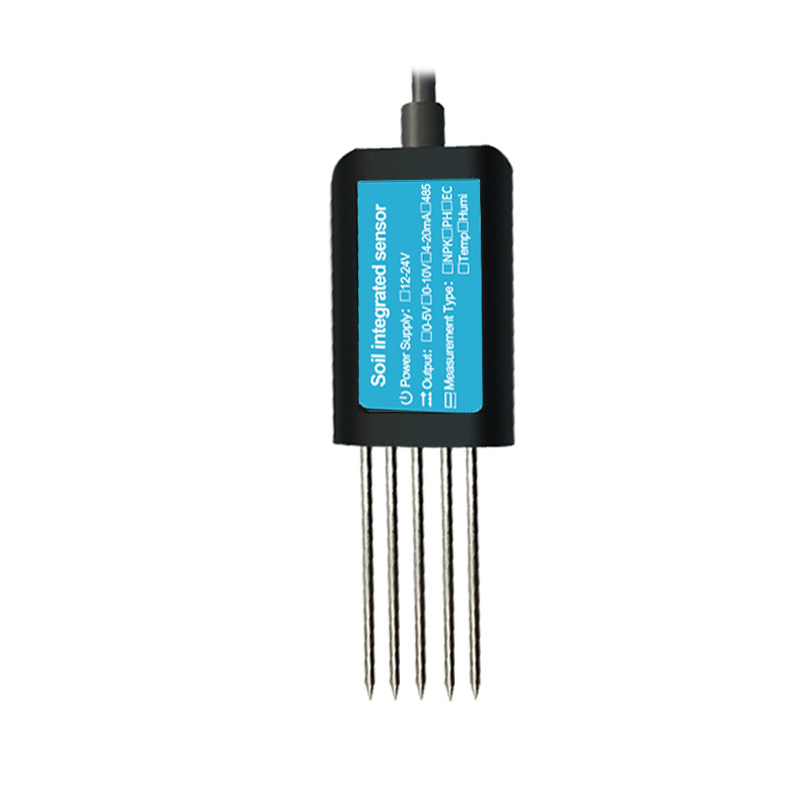Soil moisture plays a crucial role in the health and productivity of agricultural land and natural ecosystems. It directly affects the growth, development, and yield of plants, as well as the cycling of nutrients and the availability of water resources. Monitoring soil moisture levels is therefore essential for effective land management and resource conservation. In recent years, soil moisture sensors have emerged as valuable tools for providing accurate and real-time information about soil moisture conditions. In this article, we will explore the role of soil moisture sensors in land monitoring and their significance in improving agricultural practices and environmental sustainability.

Monitoring Irrigation Needs
One of the primary applications of soil moisture sensors is in determining irrigation needs. By measuring the moisture content in the soil, these sensors enable farmers and land managers to make informed decisions regarding the timing and amount of water to be applied. With real-time data from soil moisture sensors, irrigation can be scheduled more efficiently, reducing water waste and improving crop productivity. This not only saves valuable water resources but also reduces the energy and cost associated with irrigation practices.
Managing Nutrient Application
Soil moisture sensors also play a crucial role in managing nutrient application. The availability of moisture in the soil directly affects the movement and availability of nutrients for plant uptake. By monitoring soil moisture levels, farmers can optimize the timing and amount of fertilizers and other nutrients applied to the soil. This helps prevent over or under application of nutrients, reducing environmental pollution and maximizing the efficiency of nutrient uptake by plants.
Preventing Soil Erosion
Soil moisture sensors can contribute to the prevention of soil erosion, a critical issue in land management. By continuously monitoring soil moisture levels, land managers can identify areas with low moisture content that are highly susceptible to erosion. This allows for proactive measures such as mulching, contouring, or planting cover crops to stabilize the soil and control erosion. By preventing soil erosion, soil moisture sensors help maintain soil fertility, reduce sedimentation in water bodies, and protect valuable topsoil from degradation.
Assessing Soil Health
Soil moisture sensors can provide valuable insights into soil health and condition. Changes in soil moisture levels can indicate factors such as compaction, drainage issues, or organic matter content. By monitoring soil moisture over time, land managers can identify and address these issues, improving soil structure, nutrient holding capacity, and overall soil health. This leads to healthier plant growth, increased water infiltration rates, and improved resilience of the land to climate variability.
Optimizing Crop Management
In addition to irrigation and nutrient management, soil moisture sensors can aid in optimizing other aspects of crop management. By monitoring soil moisture levels, land managers can determine ideal planting times, adjust harvesting schedules, and predict disease and pest outbreaks. This allows for more efficient resource allocation, reduced crop losses, and improved overall farm productivity.
Enhancing Water Resource Management
Soil moisture sensors are valuable tools in enhancing water resource management. By providing accurate and real-time data on soil moisture conditions, these sensors enable land managers to make informed decisions regarding water allocation and conservation. This is particularly important in regions with limited water resources or facing water scarcity challenges. By using soil moisture sensors, land managers can optimize water use, minimize water waste, and ensure sustainable water management practices.

Conclusion
Soil moisture sensors have revolutionized land monitoring and management practices. Their ability to provide accurate, real-time data on soil moisture conditions has transformed irrigation, nutrient management, erosion control, and overall land productivity. By using soil moisture sensors, land managers and farmers can make informed decisions, conserve water resources, enhance soil health, and optimize agricultural practices. These sensors are indispensable tools for achieving sustainable land management and environmental stewardship.